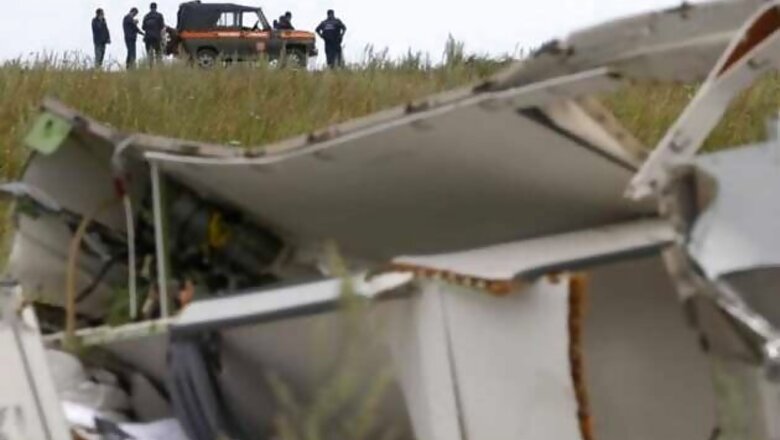
views
United Nations: In the wake of the downing of the Malaysia Airlines jet over Ukraine, the UN and global aviation bodies have set up a task force to reduce the risks of civilian planes flying over conflict areas and ensure that the "right information reaches the right people at the right time" to prevent similar tragedies.
The decision was taken at a special meeting, convened in Montreal, triggered by the downing of Malaysia Airlines Flight MH17 over eastern Ukraine on July 17 as it was traveling from Amsterdam to Kuala Lumpur, resulting in the death of all its 298 passengers.
"The downing of Malaysia Airlines Flight MH17 is unacceptable. While aviation is the safest form of transport, the MH17 incident has raised troubling concerns with respect to civilian aircraft operating to, from and over conflict zones," the UN International Civil Aviation Organisation (ICAO), International Air Transport Association (IATA), Airports Council International (ACI) and the Civil Air Navigation Services Organisation (CANSO) said in a statement.
The agencies stressed the need for accurate and timely information and intelligence that might affect the safety of passengers and crew, while recognising that this is a "highly complex and politically sensitive" endeavour that involves not only civil aviation regulations and procedures but also national security and intelligence gathering activities.
The task force, composed of national and industry experts, will address the civil aviation and national security aspects of the challenge of ensuring that the "right information reaches the right people at the right time," according to the statement.
It was also decided at the meeting that ICAO would convene a high-level safety conference with all of its 191 member countries in February, 2015.
In addition, the industry has called for ICAO to address fail-safe channels for essential threat information to be made available to civil aviation authorities and industry.
A UN specialised agency that was created in 1944, ICAO works with the 191 signatory States of the Convention on International Civil Aviation and global industry and aviation groups to develop international Standards and Recommended Practices (SARPs) which are then used by States when they develop their legally-binding national civil aviation regulations.
Working in collaboration with states, the agency has set over 10,000 standards, covering issues such as air traffic services, operation of flights, environmental protection and air safety.
These issues will continue to garner significant attention given that the global air transport network is projected to double in size by 2030.
According to ICAO, the number of flights, currently 30 million annually, will grow to 60 million, while the total annual passengers served will rise to 6 billion from today's 3 billion.
"That poses a significant challenge," says Olumuyiwa Benard Aliu of Nigeria, the President of the ICAO Governing Council, noting the imperative to do everything possible to help ensure the safety of flights.
Aliu said a common misconception about ICAO is that the agency is responsible for determining air routes and deciding whether or not they are safe.
"Once the routes are designed, of course in collaboration with the industry, it is the responsibility and the obligation of the state through which the route passes to undertake risk assessment, to regulate the operation on the route and to either decide to close the route or keep it open," he added.
Especially in areas of conflict, countries have the responsibility to assess the particular risks arising from the conflict and then make a decision on when and how to close the routes, he said.
When incidents do happen, as in eastern Ukraine, ICAO can be called on to assist with investigating.
In the wake of this month's tragedy, accident investigation experts from ICAO went to the country to assist their Ukrainian counterparts with the official accident investigation into the loss of the Malaysia Airlines flight.



















Comments
0 comment